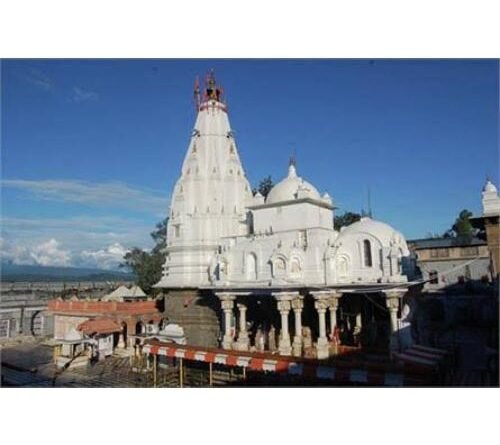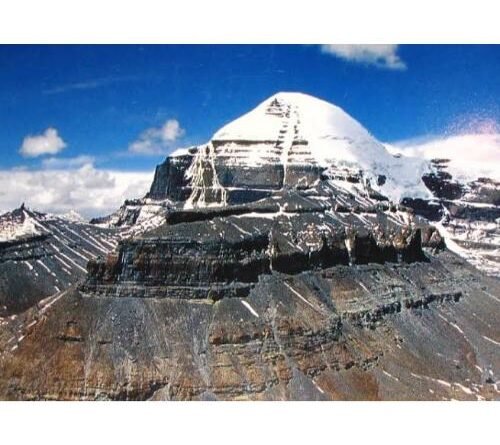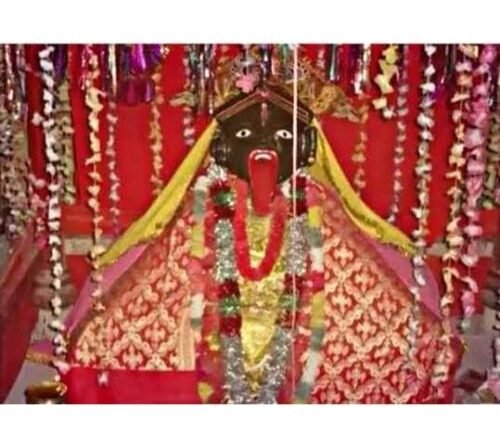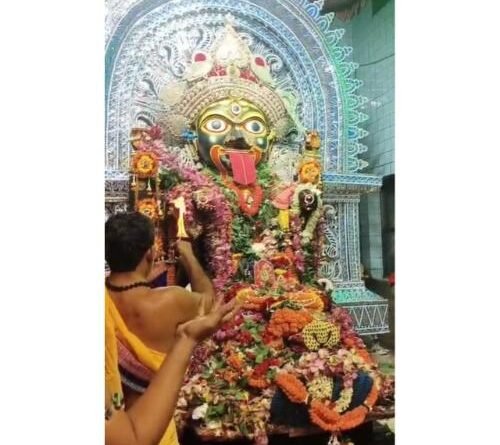Manasa Shaktipeeth (Dakshayani Shakti Peeth) Tibet
Manasa Shaktipeeth, also known as Dakshayani Shakti Peeth, is located near the sacred Lake Manasarovar at the foot of Mount Kailash in Tibet.The region is surrounded by snow-covered mountains and the clear blue waters of Lake Manasarovar, creating a divine and peaceful atmosphere.
Deity Details
The main deity worshipped here is Goddess Dakshayani, another form of Goddess Sati, the daughter of King Daksha Prajapati and wife of Lord Shiva. She represents purity, sacrifice, and devotion. Lord Shiva is worshipped here as Amar (Immortal Bhairava). This is believed to be the place where the right palm (hand) of Goddess Sati fell when Lord Vishnu cut her body with his Sudarshana Chakra to calm Lord Shiva’s anger.
Temple Architecture
Manasa Shaktipeeth is not a built temple in the traditional sense but a natural rock shrine. Pilgrims worship a sacred stone near the banks of Lake Manasarovar which is believed to hold the divine presence of Goddess Dakshayani. Small platforms, prayer flags, and rock cairns mark the sacred spot. Because of the harsh weather and high altitude of over 15,000 feet, no large structures exist here. The snow-clad Mount Kailash stands nearby, symbolizing Lord Shiva’s abode, while the calm waters of Manasarovar represent the goddess herself.
History
Manasa Shaktipeeth is counted among the 51 ancient Shakti Peethas mentioned in the Devi Bhagavata Purana and other sacred texts. Each Peeth marks a spot where a part of Goddess Sati’s body or ornaments fell when Lord Vishnu used his Sudarshana Chakra to calm Lord Shiva’s grief after Sati’s self-immolation.
In this holy region near Mount Kailash, it is believed that Sati’s right palm fell, giving rise to the worship of Dakshayani as the presiding goddess. Over time, pilgrims undertaking the Kailash–Manasarovar Yatra began offering prayers here as part of their spiritual journey. The site represents the union of Lord Shiva (Mount Kailash) and Goddess Shakti (Lake Manasarovar), symbolizing perfect cosmic balance.
Sthalapurana
According to legend, when King Daksha organized a grand yagna, he deliberately did not invite his son-in-law, Lord Shiva. His daughter, Sati, could not bear the insult and attended the yagna uninvited. When Daksha continued to speak ill of Shiva, Sati could no longer tolerate the humiliation and sacrificed herself in the fire of the yagna.
Hearing of her death, Lord Shiva, filled with anger and sorrow, performed the Tandava, carrying her body across the universe. To restore cosmic order, Lord Vishnu used his Sudarshana Chakra to cut her body into several pieces, which fell at different places, forming the sacred Shakti Peethas.
At the spot near Lake Manasarovar where her right hand fell, the goddess manifested as Dakshayani, radiating peace and forgiveness. The clear and calm waters of the lake are said to reflect her divine energy, and the reflection of Mount Kailash in the lake symbolizes the eternal union of Shiva and Shakti.
Festivals
No major public festivals are held here due to the remote and high-altitude location. However, during the Kailash–Manasarovar Yatra, pilgrims offer prayers to Goddess Dakshayani as part of their spiritual journey. Devotees light ghee lamps, offer white flowers and milk, and chant the Devi Mahatmyam and Dakshayani Stotra on the banks of the lake. Meditation at sunrise and full-moon nights is considered very powerful, as the reflection of Mount Kailash glows on the surface of Lake Manasarovar, symbolizing the divine union of Shiva and Shakti. The peaceful energy of the lake during these moments is said to bring inner purification and spiritual upliftment.















